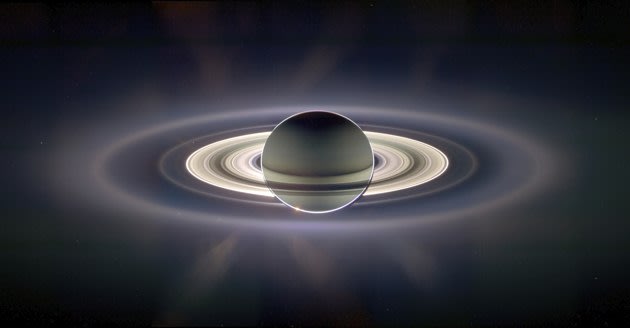Computerworld - Taking a different tack than it did three years ago, Microsoft has made a preview of Windows 8 available to anyone who takes the time to download it. Windows 8 Developer Preview, as Microsoft called the pre-beta build, was posted to a company website shortly after 8 p.m. Eastern on Tuesday.
The downloads, which range from 2.8GB to 4.8GB in size, come with no restrictions, a company spokeswoman confirmed earlier in the day. Microsoft gave customers their most-detailed look yet at the new operating system during a two-and-a-half-hour presentation at its BUILD Windows conference, which opened Tuesday and runs through Friday.
When Microsoft debuted a similar developers preview of Windows 7 in October 2008, the company limited the early look to attendees at its Professional Developers Conference (PDC), and told the general public to wait for a beta early the next year.
Within hours, the Windows 7 preview leaked to online file-sharing sites. Microsoft has made such leaks moot by offering Windows 8 itself. On a new Windows Dev Center site, Microsoft provided links to three different versions of Windows 8.
The largest weighs in at 4.8GB and is a 64-bit edition that also includes developer tools such as a preview of Microsoft Visual Studio 11 Express and the SDK (software developers kit) for Metro-style applications.
Metro is Microsoft's name for the Windows 8 tile-based interface that borrows heavily from Windows Phone 7.
Two other editions, a 64-bit version (3.6GB) and a 32-bit version (2.8GB) of the operating system, can also be downloaded. All are available as a disk image in .iso format that must be copied onto a DVD or USB flash drive for installation purposes. The preview requires a PC with 1GB of RAM (2GB for the 64-bit edition) and 16GB of hard drive space (20GB for 64-bit).
To install Windows 8 and the developers tools, users must overwrite the machine's current operating system (XP, Vista or Windows 7) with a clean install. The smaller sans-tools versions, however, can be installed while retaining the files, user accounts and settings on a Vista- or Windows 7-powered PC. As it typically does when it releases early-look software, Microsoft warned casual users to steer clear of Windows 8.
"The software is provided as is, and you bear the risk of using it," said Microsoft on the download website. "It may not be stable, operate correctly or work the way the final version of the software will. It should not be used in a production environment."
Attendees of BUILD were given the preview on a special-edition Samsung slate-style PC. The Windows 8 preview can be downloaded from Microsoft's site.
Technology is a term referring to whatever can be said at any particular historical period, concerning the state of the art in the whole general field of practical know-how and tool use. Find information about the latest advances in technology of the world.
Friday, September 16, 2011
Tuesday, September 13, 2011
New Technology: NASA’s Cassini orbiter snaps unbelievable picture of SATURN

Sometimes reality is just as stunning as science fiction
Science fiction movies have spoiled us on high definition views of our planetary neighbors, but real-life photographs with equal jaw-dropping potential are exceedingly rare. That's what makes NASA's awe-inspiring snapshot of Saturn (hi-res version here) such a stunning piece of eye candy.
Taken by NASA's Cassini robotic orbiter, the shot was captured from the dark side of Saturn as the Sun's bright rays illuminated every piece of dust and debris circling the planet. Cassini has offered astronomers a never-before-seen look at Saturn and revealed more information about the planet than any craft before it. The craft has taken so many pictures of the ringed wonder that they were recently made into a short flyby film that looks like it was created by George Lucas rather than a robotic space explorer.
The Cassini probe was launched in 1997 and took a further 7 years to reach Saturn's orbit. The total cost of its overarching objective of studying the ringed planet stands at a staggering $3.26 billion. However, the wealth of information it has wrought — including amazing pictures like the one above, and recordings of massive lightning storms on the planet — have already made it one of the best investments in space exploration. Hopefully Juno — which began a 5-year trek to Jupiter just last month — will bring us some equally stunning shots of Saturn's neighbor.
[Image credit: NASA]
Friday, April 29, 2011
Apple May Have Puchased iCloud Name
An anonymous tipster told GigaOm's Om Malik that Apple has paid Swedish company Xcerion $4.5 million for its iCloud storage service and the domain name iCloud.com. This news has led to rumors that Apple is planning to use the name iCloud for a cloud-based music service.
Xcerion recently rebranded its iCloud service as CloudMe after acquiring the CloudMe.com domain.
TechCrunch asked the company if the name change had anything to do with Apple, but Xcerion's rep said that it chose the new name to "better reflect our new focus on files and storage," and avoided any mention of Apple.
As of now, Xcerion is still the official owner of iCloud, since no announcements have been made to the contrary.
Xcerion recently rebranded its iCloud service as CloudMe after acquiring the CloudMe.com domain.
TechCrunch asked the company if the name change had anything to do with Apple, but Xcerion's rep said that it chose the new name to "better reflect our new focus on files and storage," and avoided any mention of Apple.
As of now, Xcerion is still the official owner of iCloud, since no announcements have been made to the contrary.
Subscribe to:
Comments (Atom)
